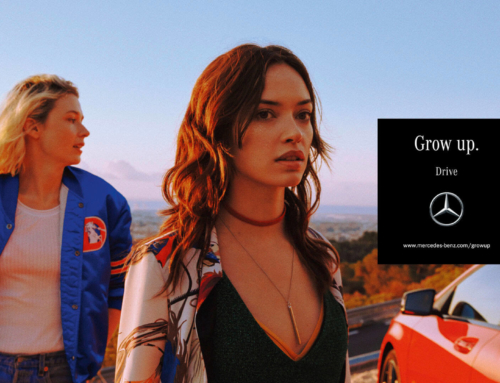Young Poles best remembered Pepsi, Coca-Cola, BMW, Nike and Mercedes ads. Foreigners remembered Pepsi, Thai insurance, The Witcher, Coca-Cola and Game of Thrones. Some commercials failed to reach the awareness of a single viewer. There were many commercials remembered by only 1-2 people. And those that were remembered were not always regarded positively.
Before I made the discovery, I’d carried out several-stage surveys.
The method
Young people looked for the best and the worst, in their opinion, commercials from those available on YouTube. I collected the examples they came up with, and added a few ads of my own, thus creating a list of 35 advertising spots. About half of the list was made up of ads universally considered cool, and the others were ads perceived negatively, disliked by young adults.
Then I invited other groups of students to watch these spots. The groups included Poles (23 people) and foreigners — mainly Europeans from the Erasmus program (22 people), participating in my psychology classes in advertising.
They watched the spots before they started the workshop with me and before they listened to my micro-lectures
on the methods of finding the target niche, reaching the psyche of target groups, stimulating aspirations, appealing to the dreams and reality of the recipients, creating persuasive messages, advertising effectiveness, etc.
In the first class, I asked them to settle down comfortably and watch the “advertising block”. I did not give them any special instructions. They did not have to be “quiet”, switch off their tablets or phones; they did not even have to be especially vigilant. Because I did not want to push them and create pressure from “authority” — I just observed them from the back of the room. A set of print ads were circulated around the room to distract them slightly.
After completing the several-dozen-minute advertising block, I asked students to write down the pages which they remembered from TV and press commercials and what was the message. The viewers also declared how well they remembered the commercials they liked and what their basic message was.
Pepsi: not good
Both groups remembered Pepsi’s spot with Kendall Jenner (PL 80%, IN 68%). Naturally, the advertisement is well produced and very aesthetic, but the majority of the young people remembered it mainly negatively.
Pepsi wants to position itself as a young, rather dynamic and creative brand. And probably it partially manages to achieve such an image. However, in this spot, as it turned out, the brand’s communication managers made a serious misstep.
All respondents knew what the ad was for, but said it was… “not good”, “awful cliché”, or “a pathetic example of WASP activism”; to mention just a few.
Polish students pointed out that the use of freedom movements and “occupy” symbols by an international corporation was pretentious and way “over the top”. The average rating of this ad was one of the of all the remembered ones.
Kendal Jenner, a youth celebrity, certainly attracts attention. Pepsi, as a brand, is a construct easily accessible in the minds of young consumers. This is why the path through the consumer’s attention filter was unobstructed in this case. It is a pity that this unique opportunity to break through the cognitive overload was used by the marketers to create a narrative which produced negative result. Pepsi marketers quickly realized in this situation and withdrew the spot from their channels.
Coca-Cola: the good and nice one
Like the Pepsi ads, both groups also remembered Coca-Cola spots. “Brotherly love” was the most memorable spot. Respondents associated it with “good times”, “interpersonal relations” and “friendship”. In the second place, the respondents mentioned the spot “Reasons to believe”, which — according to the respondents – radiated “positive vibrations”, “hope” and a pleasant atmosphere that “everything will work out.”
In its marketing communication, Coca-Cola masterfully taps into positive emotions. . It’s no different in the case of Brotherly Love. “Reasons”, however, is beyond that. Here, Coca-Cola used negative associations and exploited our fears — that tanks are built in the world, corruption is spreading, speculative bubbles break, weapons trade – in order to contrast them with positive emotions: warmth, teddy bears, dough mums and classic hits, i.e. everything that people “naturally” associate with Coca-Cola.
The mechanism is simple:
to scare, build a negative tension to open the consumer to an offer that brings a “relief” to it. Offer a “hug”, or “refuge”. Coca-Cola did implement the above strategy, but an ultra-light version of it. Coca-Cola did implement the above strategy, but an ultra-light version of it.
In consumer psychology, it is not a token of uniqueness or sophistication. And yet, the implementation and employment of such a classical mechanism in such a graceful form arouses admiration and… well, sympathy. I like it myself and believe that many other professionals are aware of the art of persuasion.
Thai Insurance — One That Excites, Moves and Does Good
An advertising well remembered by the international association was an ad for Thai life insurance. Foreign students remembered the spot almost as well as the Pepsi advertisement from Kendall Jenner. This ad did not make almost any impression on the Polish students — only four people remembered it. At the same time, everyone, both Poles and foreigners, had very positive associations about it. (…)
*
That’s just a fragment of the article. You’ll find the full version at my Linked In profile page here.
Photo: freepik.com




